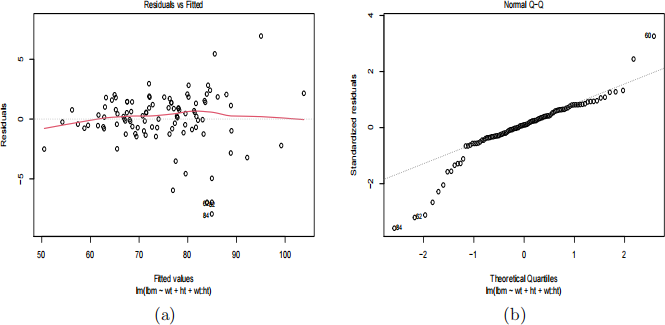7CCMMS61 Statistics for Data Analyisis 2021
Hello, dear friend, you can consult us at any time if you have any questions, add WeChat: daixieit
7CCMMS61 Statistics for Data Analyisis
2021
Q 1. n = 7 female runners were randomly selected among the first 50 female finishers
of the London Marathon. The following weights (kilograms) of these runners were recorded before and after the London Marathon:

(a) Calculate the sample mean and median of the differences of the weights before and after the London Marathon.
[6 marks]
(b) Calculate the range, interquartile range, and sample variance of the differ- ences of the weights before and after the London Marathon.
[8 marks]
(c) Calculate the sample covariance and correlation of the weights before and after the London Marathon.
[8 marks]
(d) Are these data representative of the weight of female runners of the London Marathon? Explain why.
[3 marks]
Q 2. Let Ⅹ be a continuous random variable with probability density function

where 0 < θ < o is an unknown parameter.
(a) Calculate the cumulative distribution function 夕X (α).
[4 marks]
(b) Calculate the mean and variance of Ⅹ .
[4 marks]
(c) Calculate the median of Ⅹ .
[3 marks]
(d) Let Ⅹ1 and Ⅹ2 be two independent random variables with probability den- sity function jX . Calculate the probability that Ⅹ1 > 0 and Ⅹ2 < 0.
[4 marks]
(e) Let Ⅹ1.....Ⅹn be a collection of independent and identically distributed random variables with probability density function jX . Calculate the method of moments estimator of θ .
[10 marks]
Q 3. A pharmaceutical company is interested in comparing the oxygen levels (mm
Hg) in the blood under the use of two types of hypoxemia (below-normal level of oxygen) treatments. To compare the two treatments, they apply Treatment I to n1 = 10 persons, and Treatment II to n2 = 9 persons. This is, n = 19 persons in total. The corresponding oxygen levels are reported in the following tables:


Table 2: Treatment II
(a) Calculate the sample means of the oxygen levels associated to Treatment I and Treatment II.
[2 marks]
(b) Calculate the sample variances of the oxygen levels associated to Treatment I and Treatment II.
[3 marks]
(c) Test the hypothesis

at the 5% significance level, where μ 1 is the mean of the oxygen level for Treatment I and μ2 is the mean of the oxygen level for Treatment II. State your assumptions.
[10 marks]
(d) Test the hypothesis

at the 1% significance level, where μ 1 is the mean of the oxygen level for Treatment I and μ2 is the mean of the oxygen level for Treatment II.
[5 marks]
(e) Test the hypothesis

at the 1% significance level, where μ 1 is the mean of the oxygen level for Treatment I and μ2 is the mean of the oxygen level for Treatment II.
[5 marks]
Q 4. Data have been collected to study the lean body mass in n = 102 male athletes.
The lean body mass (lbm, in kg), weight (wt, in kg), and height (ht, in cm) variables have been imported in R. Sport researchers are interested in under- standing the effect of weight and height on the lean body mass. The following analysis has been carried out in R.
> model1 <- lm(lbm ~ wt + ht + wt:ht)
> summary(model1)
# Call:
# lm(formula = lbm ~ wt + ht + wt:ht)
#
# Residuals:
# Min 1Q Median 3Q Max
# -7.9353 -0.7557 0.2131 1.3746 6.9411
#
# Coefficients:
# Estimate Std. Error t value Pr(>|t|)
# (Intercept) -35.386935 29.319616 -1.207 0.23036 # wt 0.998519 0.347141 2.876 0.00494 ** # ht 0.279116 0.161547 1.728 0.08718 . # wt:ht -0.001570 0.001885 -0.833 0.40706 # ---
# Signif. codes: 0 *** 0.001 ** 0.01 * 0.05 . 0.1 1 #
# Residual standard error: 2.256 on 98 degrees of freedom # Multiple R-squared: 0.9495,Adjusted R-squared: 0.9479 # F-statistic: 613.7 on 3 and 98 DF, p-value: < 2.2e-16

Figure 1: model1 : (a) Residuals vs fitted values plot and (b) QQ-plot.
(a) Write down the mathematical model that has been fitted in model1. What is the estimate of the lean body mass for an athlete with (wt=80 and ht=175)?
State the corresponding assumptions and explain your calculations.
[8 marks]
(b) Consider the residuals plot for model1 in Figure 1. Explain the interpreta- tion of the plots in Figure 1a and Figure 1b. Do you spot any problem with the model assumptions? If yes, explain which model assumptions might not be reasonable.
[4 marks]
(c) The interaction between weight and height is then removed using the fol- lowing R code:
> model2 <- lm(lbm ~ wt + ht)
> summary(model2)
# Call:
# lm(formula = lbm ~ wt + ht)
#
# Residuals:
# Min 1Q Median 3Q Max
# -8.0842 -0.7282 0.2217 1.4204 6.9818
#
# Coefficients:
# Estimate Std. Error t value Pr(>|t|)
# (Intercept) -11.47816 5.91988 -1.939 0.055359 . # wt 0.71018 0.02424 29.301 < 2e-16 *** # ht 0.14840 0.03805 3.901 0.000175 *** # ---
# Signif. codes: 0 *** 0.001 ** 0.01 * 0.05 . 0.1 1 #
# Residual standard error: 2.253 on 99 degrees of freedom # Multiple R-squared: 0.9491,Adjusted R-squared: 0.9481 # F-statistic: 923.1 on 2 and 99 DF, p-value: < 2.2e-16
Calculate the estimate of the lean body mass for an athlete with (wt=80 and ht=175) and indicate how to calculate a 95% confidence interval using model2 (either a formula or using R commands). Do the summaries of model1 and model2 suggest an important improvement in the goodness of fit of the model by including the interaction of weight and height?
[6 marks]
(d) Does the analysis support the belief that there is an interaction effect be- tween weight and height for explaining the lean body mass of the athlethes? Carry out the appropriate test of hypothesis at a 0.05 significance level and justify your conclusion.
[7 marks]
2022-01-12